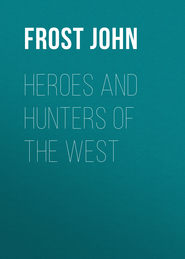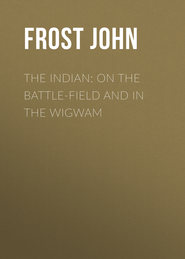По всем вопросам обращайтесь на: info@litportal.ru
(©) 2003-2024.
✖
History of the State of California
Настройки чтения
Размер шрифта
Высота строк
Поля
19
Abridged from Dufresnoy's "Mineralogie."
20
The Alta Californian, of the 1st of May, 1850, furnishes us with an interesting account of the origin and meaning of the names of places in the new State. We have elsewhere alluded to the name California, as being derived from caliente and fornalla, two Spanish words, together signifying hot furnace.
Pueblo de los Angeles – City of the Angels. So named from the fertility of the soil, the geniality of the climate, &c.
San Diego, Santa Barbara, San Luis Obispo, Santa Clara, Santa Cruz, San Francisco, were all originally Catholic missionary stations and were so named by the priests.
Monterey signifies literally king of forests, and was so called in honor of Count Monterey, as well as from the neighboring forest of massive pines and other trees.
Contra Costa, the name of a county, signifies opposite coast, from its being opposite San Francisco. Mount Diablo, which is in this county, was named from the following circumstance:
In 1806 a military expedition from San Francisco marched against the tribe "Bolgones," who were encamped at the foot of the mount; the Indians were prepared to receive the expedition, and a hot engagement ensued in the large hollow fronting the western side of the mount. As the victory was about to be decided in favor of the Indians, an unknown personage, decorated with the most extraordinary plumage, and making divers movements, suddenly appeared near the combatants. The Indians were victorious, and the incognitio (Puy) departed toward the mount. The defeated soldiers, on ascertaining that the spirit went through the same ceremony daily and at all hours, named the mount "Diablo," in allusion to its mysterious inhabitant, that continued thus to make his strange appearance, until the tribe was subdued by the troops in command of Lieutenant Gabriel Moraga, in a second campaign of the same year. In the aboriginal tongue "Puy" signifies "Evil Spirit;" in Spanish it means Diablo, and Devil in the Anglo-American language.
Calaveras signifies skulls, and the creek thus styled was named from the fact of three thousand skulls having been found lying on its banks by its early discoverers. They were the remnants of a great battle between the Indians.
Tuolumne, which has been spelt so many different ways in the letters from California, is a corruption of the Indian word "talmalamme," a cluster of stone wigwams.
Mariposa means butterfly. The river was so named in 1807, by a hunting party of Californians, from the fact of their encampment there having been surrounded by myriads of most gorgeous butterflies.
Solano was so named after a celebrated Catholic missionary.
Yolo is a corruption of the Indian word "Yoloy," and means a place abounding with rushes.
Marin was so designated after a great Indian chief, who made war so desperately against the Spaniards.
Sonoma is an Indian word, signifying valley of the moon. The Indians so named the valley in which the present town of that title is situated.
Napa was the name of the Indian tribe who inhabited the valley of the same name.
Mendocino was so named after the first Viceroy of Mexico.
Yuba, a corruption of "uba," originally alluded to the immense quantities of vines which shaded the river.
Butte is a French word signifying hill, and was given by a party of hunters from the Hudson Bay Company to a range of high hills in the valley of the Sacramento. From thence the county is named.
Coluse county was so called after an Indian tribe of which it was the name.
Shalta county is so styled after an Indian tribe also.







